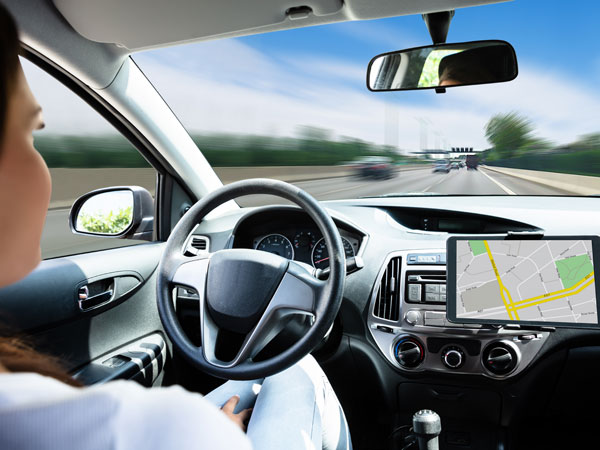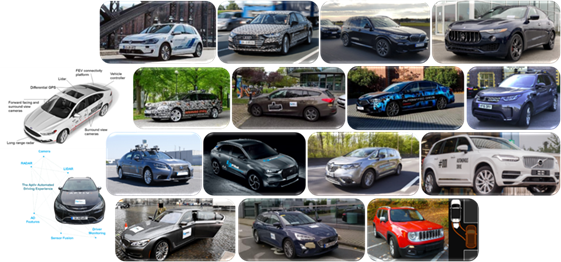The world is in a process of transformation: global warming, resource scarcity, demographic changes, and urbanisation are uncertainties that also influence the automotive industry and challenge it to respond. The transformation would go much further than safe and sustainable travel. It would enable innovations in mobility, logistics and new services benefitting societies widely. L3Pilot project responded to this challenge by large-scale piloting of automated driving.

L3Pilot and pan-European testing environment for automated driving
European Horizon 2020 project L3Pilot (L3Pilot.eu), led by Volkswagen AG and co-funded by the European Commission, came to its successful end with its Final Event in conjunction with the ITS World Congress in Hamburg 2021. Running from 2017 to 2021, the project consortium brought together stakeholders from the whole value chain, including car manufacturers, suppliers, academia, research institutes, infrastructure and governmental agencies, user groups and the insurance sector. The experience of the partners in large-scale testing intelligent vehicle technologies made it possible to create a pan-European testing environment.
Large-scale piloting in real road traffic conditions was needed to understand the potential and further enhancement needs of driving automation. The data gathered from road tests would pinpoint the areas that still require further development before entering the product refinement and the deployment of automated vehicles (AVs). And above all, we need to have more knowledge of user experiences and needs for marketable products.
The objective of the L3Pilot project was to test and study the viability of automated driving as a safe and efficient means of transportation, explore and promote new service concepts to provide inclusive mobility. To achieve this overall goal, several technical objectives had to be defined and met before we could present first empirical data-led indication of the potential of automated driving in changing transportation.

Field experiments and global survey
The large-scale piloting part comprised of some 750 test persons driving more than 400,000 kilometres on motorways and more than 24,000 km in automated mode in urban areas. The test participants experienced automated driving of level SAE level 3 (L3) either as a normal driver or on the passenger seat. Also, SAE L4 functions were tested in parking applications.
A novel common data format (CDF) was derived to transform the widely varying data already at the vehicle level into a compact data stream that could be processed by all analysis partners. The CDF is available to the public.
Eight supplementary studies were complementing large-scale piloting by providing a possibility to get deeper in the behaviour and experiences of subjects either in a simulator environment, with a Wizard-of-Oz vehicle or on a closed test track without jeopardising the safety of the test persons. These studies were also extensive comprising totally of some 600 test persons.
In responding to the need to address users’ global differences in attitudes and opinions on automated driving, the L3Pilot Global User Acceptance Survey was conducted to analyse user acceptance, attitudes, expectations towards AD with a particular focus on SAE L3 technology. The survey was large and covered some 36 000 respondents.
Evaluation results
The Global survey results indicate that overall, the respondents were very satisfied with the SAE L3 ADFs providing high ratings of (expected) comfort and safety, usefulness, ease of use and perceived enjoyment. They indicated a high intention to use conditionally automated cars, which is a common proxy to measure acceptance given that conditionally automated cars have not been commercialized yet.
The results from the pilots indicate benefits for the society owing to the introduction of SAE L3 ADF on motorways, in urban environment and for parking. Results of the impact assessment on safety show potential reductions in injury and fatal accidents on European level within the operational design domains both in motorway and urban traffic. As for the efficiency and the environment, the results scaled up for Europe indicate a slight decrease in fuel consumption and CO2 emissions, and a slight increase in travel times compared to the baseline. Driving with the automation lead to a reduction of lane changes and approaching scenarios. More driving time was spent in stable scenarios like car-following. An overall conclusion is that automated vehicle’s behaviour is similar to that of human driving in the urban environments.
Further information
For more information about the project and its results, please visit project website for all deliverables and other publication in L3Pilot.eu/downloads.

Contact:
Satu Innamaa
satu.innamaa@vtt.fi
VTT Technical Research Centre of Finland Ltd., Finland






Follow us: